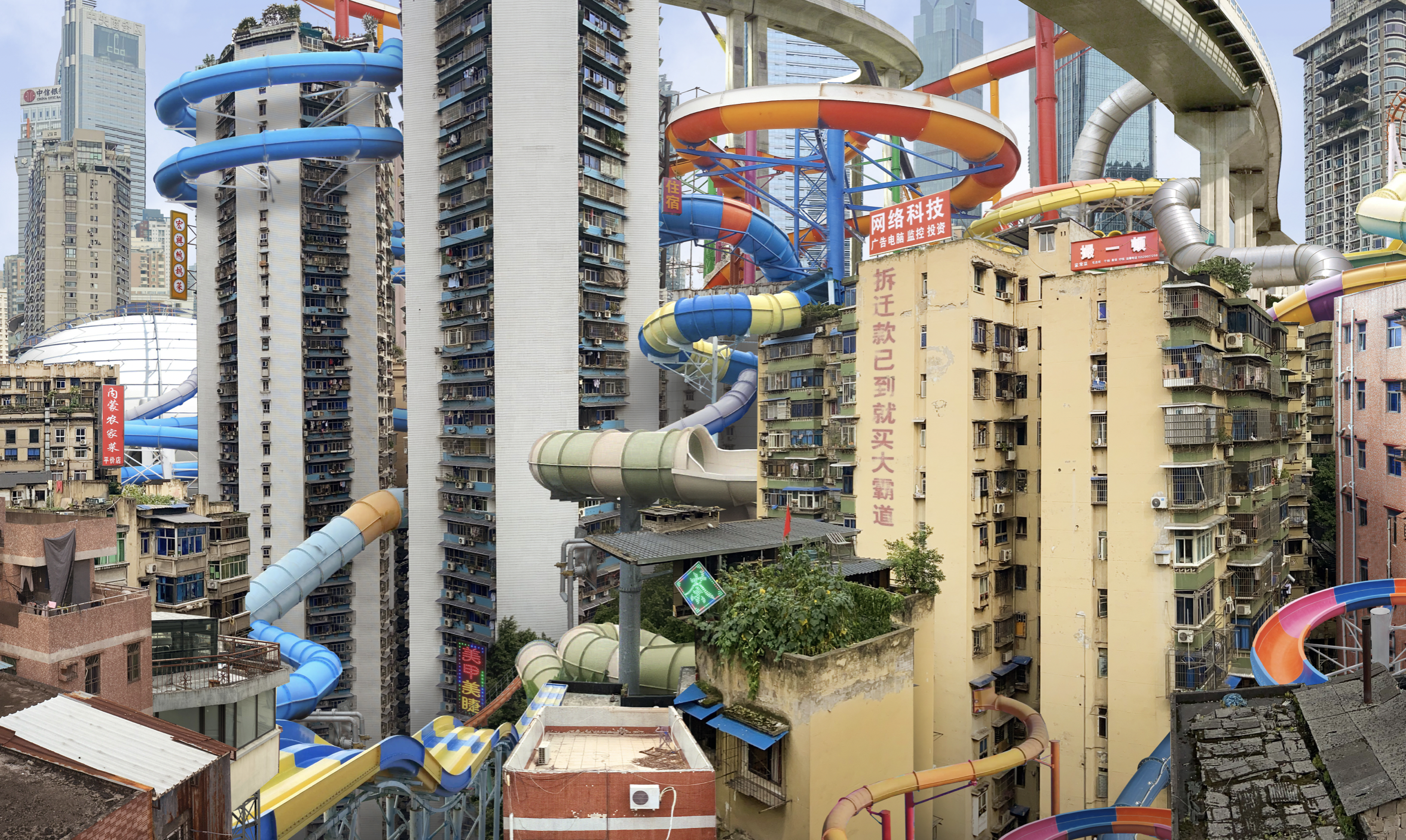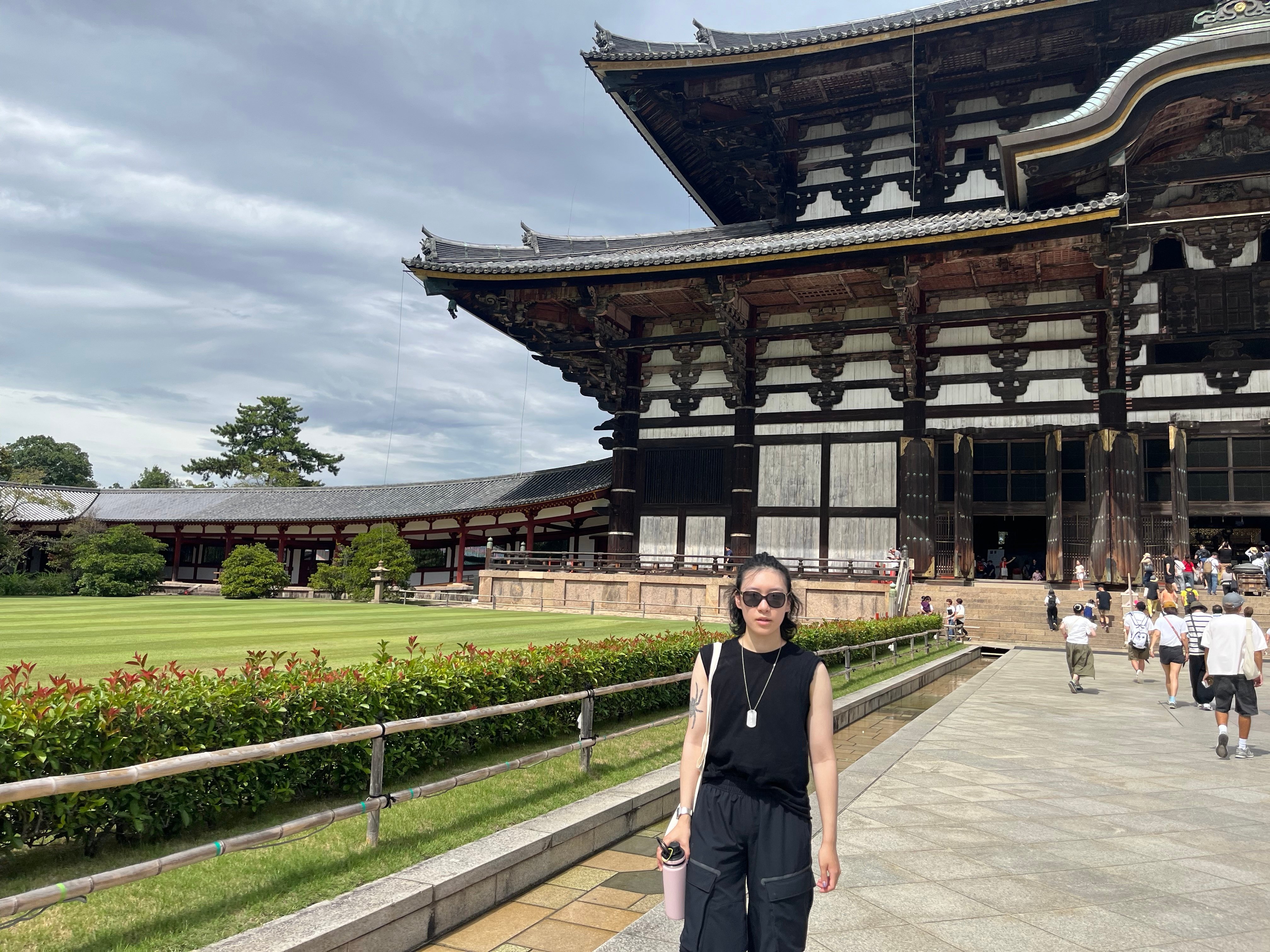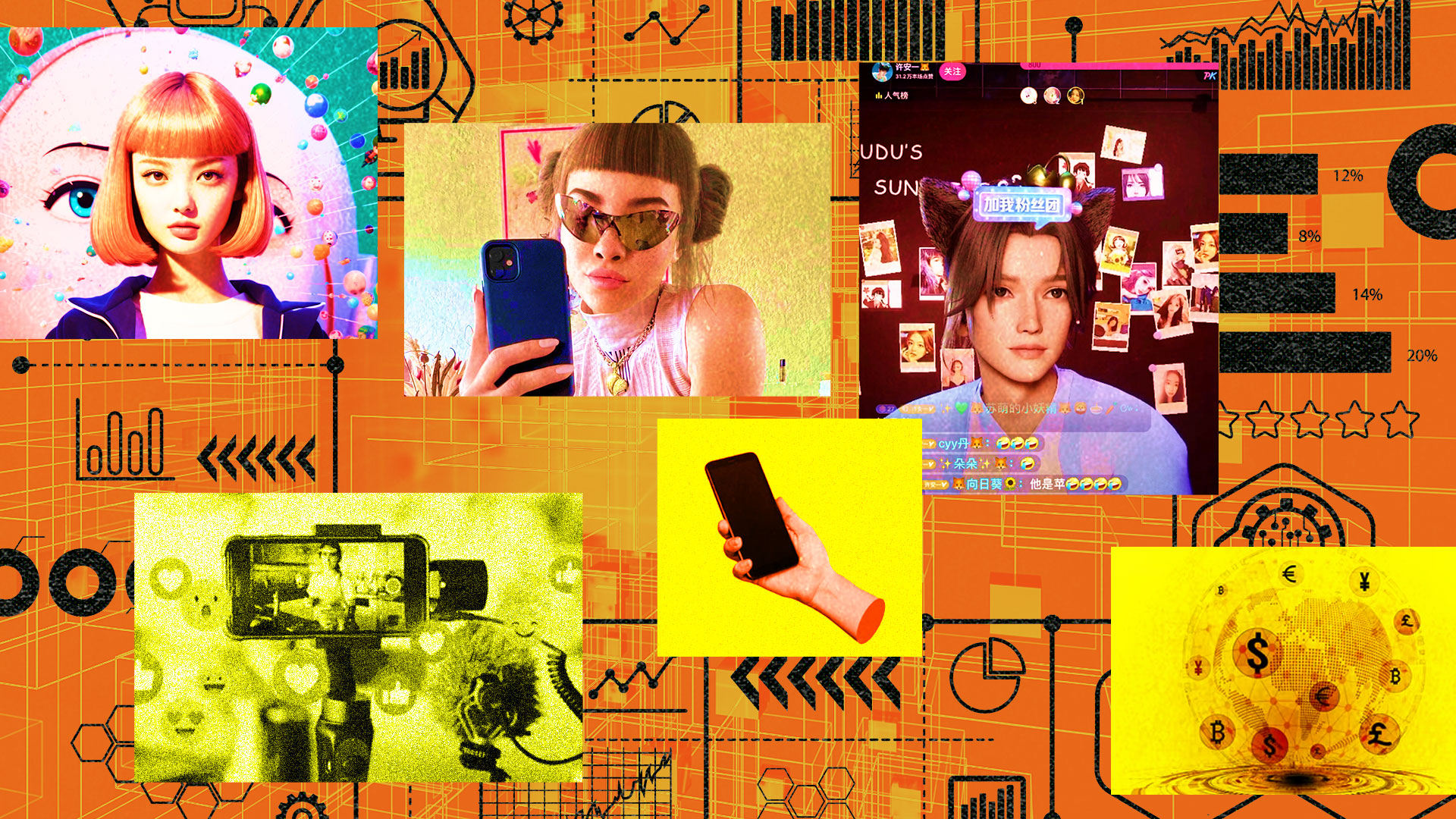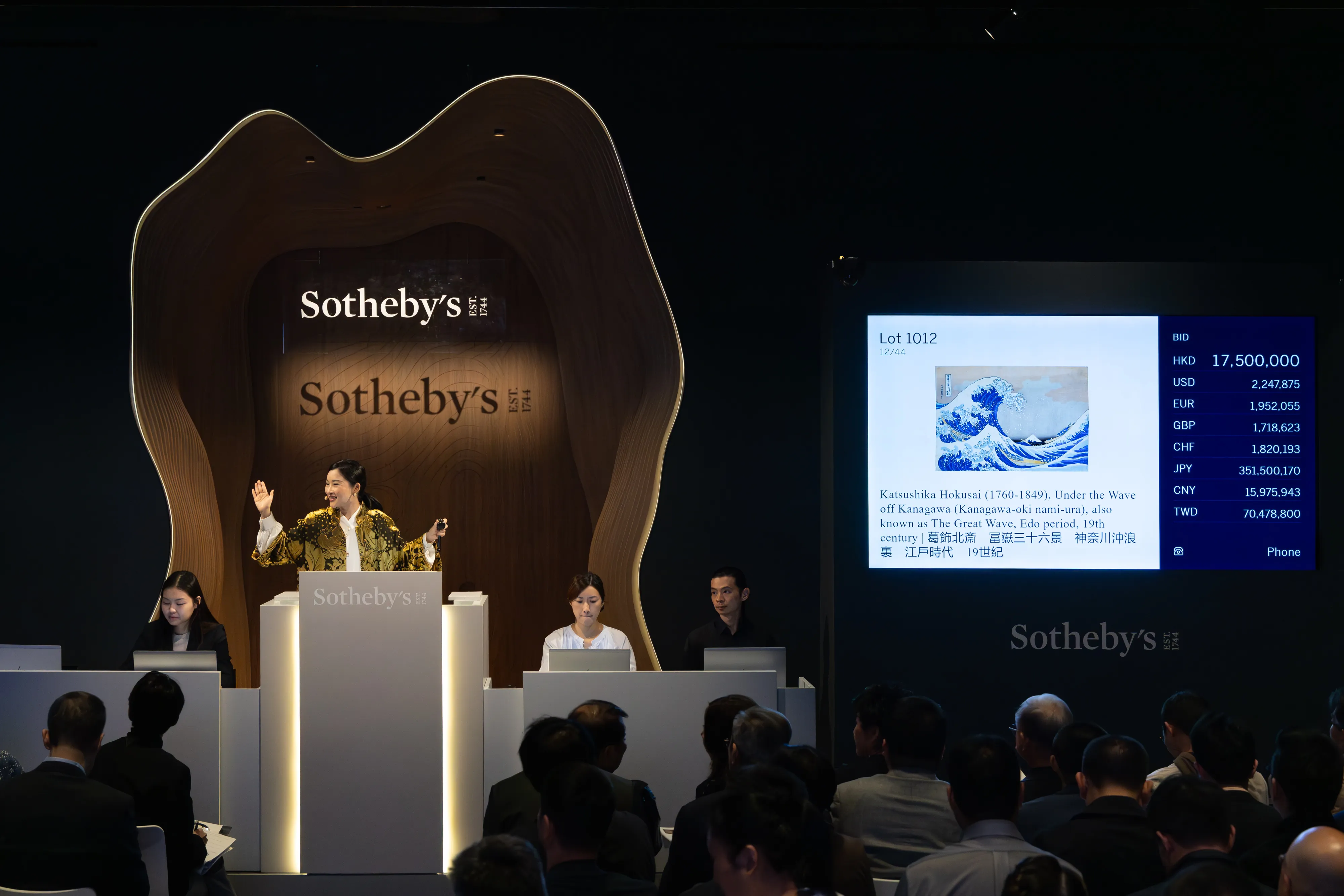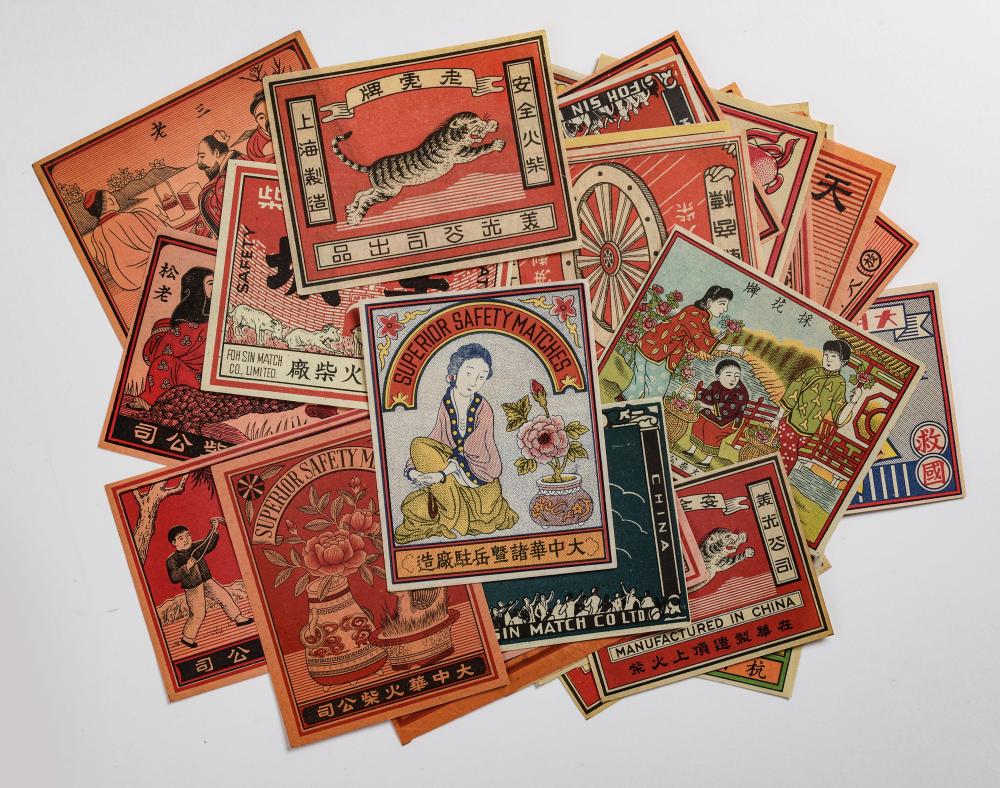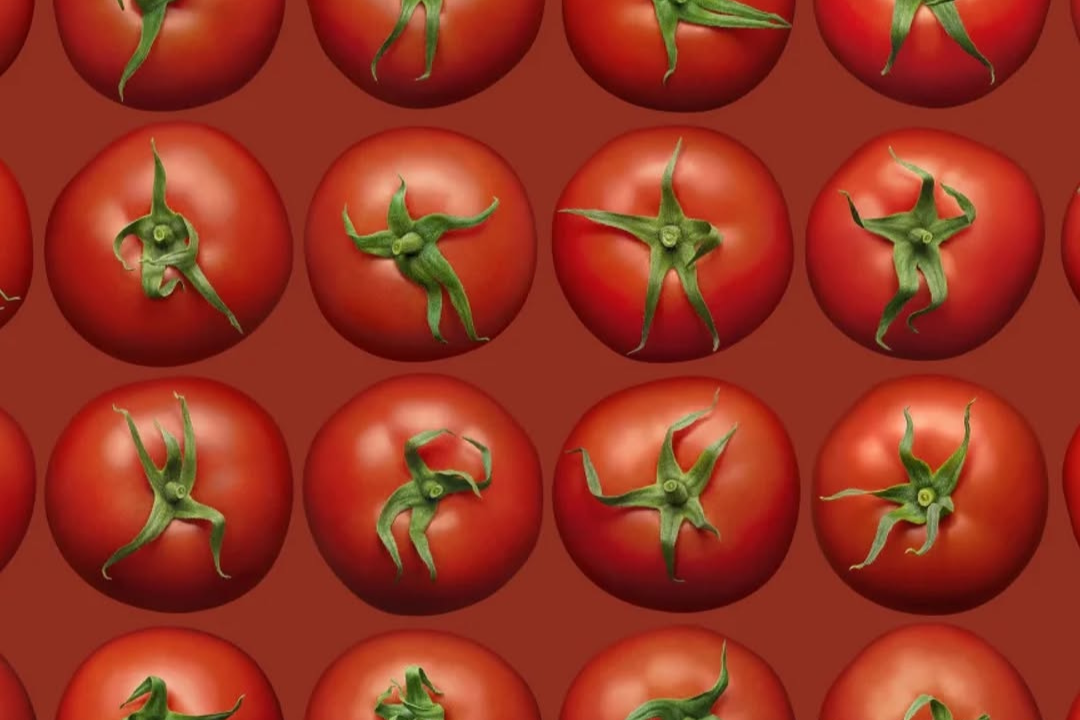Plastic cyberpunk, nostalgic retro-futurism, surreal architectural designs, infused with a dash of whimsicalness in pastel colors. It’s the world of Huang Hesha, a rising digital artist from Canton. In Too Rich City (秃力城), Huang’s most prominent piece yet, his digital dreamscape comes alive in 13-second clips that demonstrate all the moving parts of the metropolis. Huang doesn’t shy away from displaying wealth disparity, where sparkling highrises loom over gritty buildings adorned in neon signs. Too Rich City opens a virtual door and peers into the societal fringe between rural and urban China.
Chinese Dreamcore is at the center of Huang’s visual theme. It is at once foreign and familiar, nostalgic for the past while simultaneously peeping into the future. Strange aircraft hover overhead, architecturally impossible structures defy gravity, and oversized mechs come in the shape of a frog, a swan, or a mannequin head. Like puppets, they move in looping and repetitive motions. Mixed with an ominous soundtrack, there is something uncanny about the city that you just can’t quite put your finger on.
Huang grew up during the 1990s in the Guangdong Province, witnessing Shenzhen’s tech uprising and the influx of migrant workers, creating the perfect breeding ground for his artistic visions. In Too Rich City, Huang put up signs that read “motel,” “bathhouse,” and “internet cafe.” There are also funeral homes, back alley restaurants, private clinics, massage parlors, and public restrooms scattered throughout the urban densities. In Huang’s reimagining, a city’s minor building blocks suddenly become the central character.
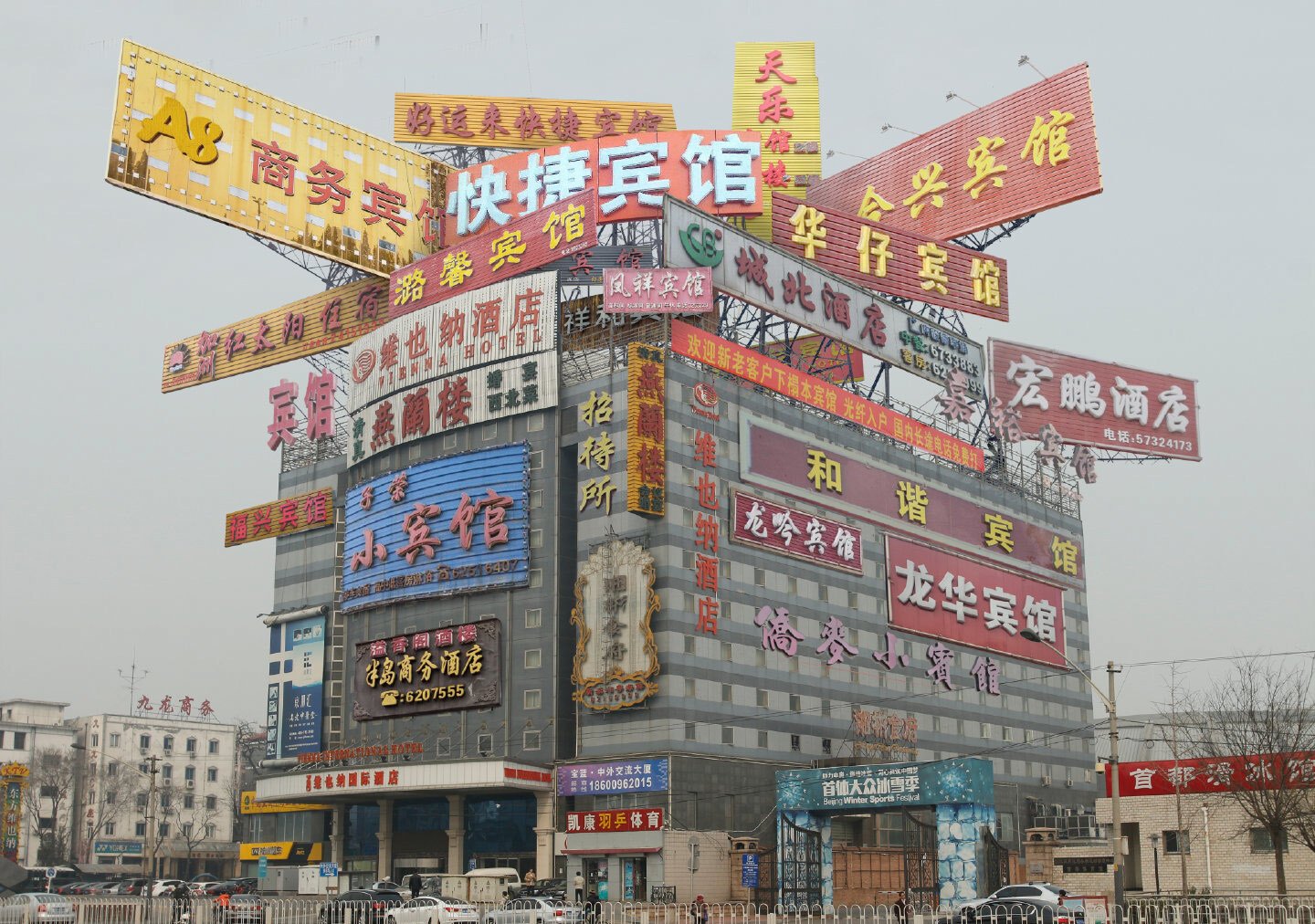
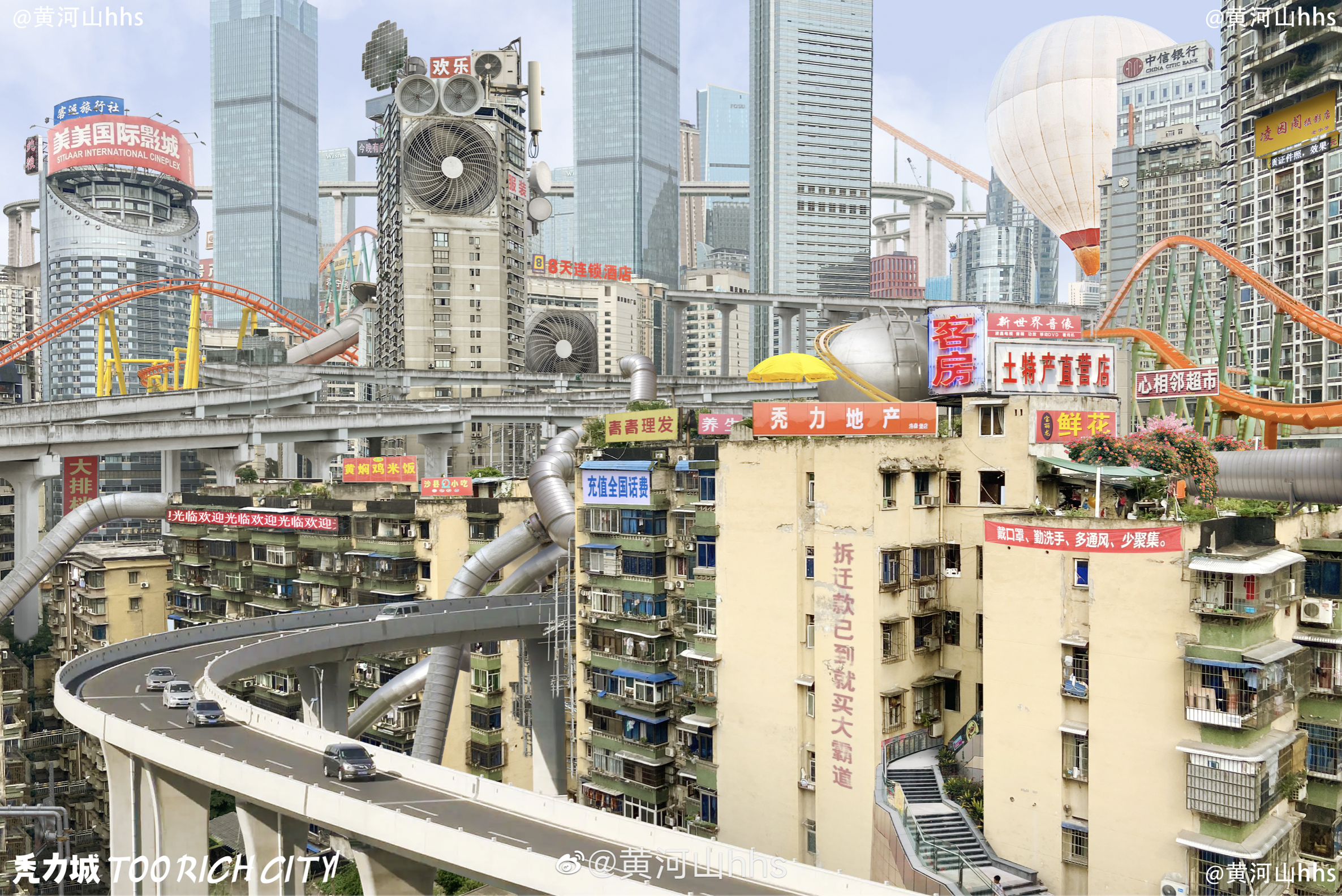
Huang incorporates early 2000s Chinese architectural elements, such as tubular forms, disk-shaped appendages, and asymmetric facades. Reminiscent of Soviet era brutalist aesthetics, but with high color saturations and reflective metallic panelings. Too Rich City is weathered and lived in, it’s organic and chaotic, and feels real enough to be a Chinese metropolis in an alternate timeline.
Many of the artist’s digital renderings are based on real-life locations, merging virtual and reality, resulting in a portrait of China that’s both frozen in time and speeding into the future. The visual juxtaposition between high-tech architectural wonders and nostalgic dreamcore vibes invites viewers to ponder our relationship with the very city we live in.
You can now experience his masterpieces in person at Huang Heshan’s very first solo exhibition at the Fotografiska Shanghai museum. Too Rich City: The Old White Swan Passenger premieres on May 9 and runs through to September 7. Be sure not to miss this striking visual and philosophical exploration into our intimate relationship with urban cities and nostalgia.
All images via Weibo.

